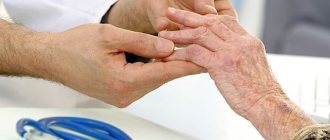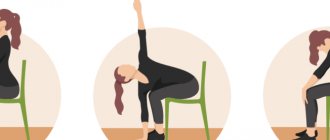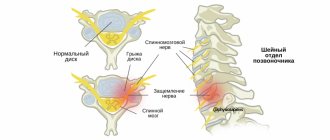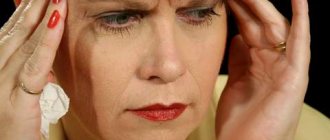Symptoms of cervical radiculopathy
Vertebrogenic cervical radiculopathy most often begins without any specific provoking reasons. Patients complain of neck pain, headaches, pain in the shoulder and arm. The pain can be either acute or subacute, and occurs most often in the morning, but periodic pain may also occur during the day. A characteristic symptom is also a feeling of stiffness in the neck muscles.
When examining patients suffering from cervical radiculopathy , limited mobility of the cervical spine and tension in the cervical muscles are revealed - paravertebral (running along the spine), the upper parts of the trapezius muscle (a flat, wide superficial muscle located in the back of the neck and in the upper back). Pain with cervical radiculopathy increases with tension in these muscles, coughing, sneezing, and can radiate to the arm, shoulder and interscapular region. The area of pain irradiation depends on the location of the lesion. There may be sensations of numbness and tingling in the area of innervation of the compressed nerve roots. weakness and motor impairment in the affected limb. In general, a feeling of numbness is detected in 50-80% of cases, muscle weakness - in approximately 1/3 of cases, changes in reflexes - in 70%.
Sometimes patients with cervical radiculopathy experience compression of the cervical spinal cord, which can lead to myelopathy.
Compression syndromes in cervical radiculopathy of various locations
Depending on the location of the pinched or irritated nerve root, the symptoms of cervical radiculopathy vary somewhat. Based on clinical signs, the following radiculopathies can be distinguished depending on the location of the source of pain.
Radiculopathies C2-C4
When the upper cervical roots are affected, spondylosis is most often diagnosed. Motor disturbances are rare. The pain is localized:
- if the C2 root is affected - in the occipital region from the foramen magnum to the vertex
- if the C3 root is affected - in the area of the auricle, mastoid process, angle of the lower jaw, outer part of the back of the head
- when the C4 root is affected - mainly in the neck and shoulder girdle
Radiculopathy C5
C5 root involvement occurs in approximately 5% of cases of cervical radiculopathy and is usually caused by C4-C5 disc herniation. Radiculopathy C5 is manifested by the following clinical signs:
- pain is localized in the neck, shoulder girdle and along the front surface of the upper shoulder
- sensory disturbances are detected on the outer surface of the shoulder
- possible paresis of muscles in the shoulder region, weakening of the reflexes of the biceps brachii and brachioradialis muscles









